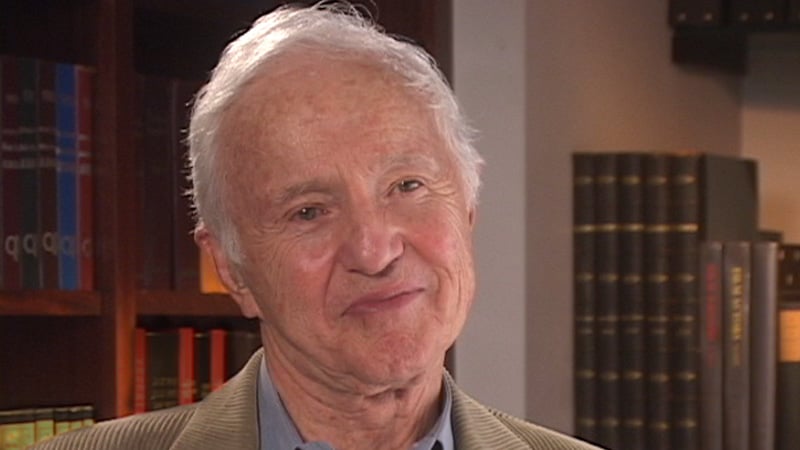Visual History with Haskell Wexler
Interviewed by:Jeremy Kagan
After serving as a member of the U.S. Merchant Marines during World War II, Haskell Wexler decided he wanted to become a filmmaker and in 1947 began directing industrial films in Chicago. He next moved to Los Angeles and directed the documentary short The Living City (1953), which was nominated for an Academy Award. During this time he also worked as a cameraman on the docu-drama The Savage Eye and the series The Adventures of Ozzie and Harriet. For the next decade Wexler worked as a cinematographer on such as films as Stakeout on Dope Street (1958), Five Bold Women (1960), The Runaway (1961), Hoodlum Priest (1961), and Face in the Rain (1963), before working on his first big-budget feature film, Elia Kazan’s Academy Award-winning America, America (1963).
While working as an acclaimed cinematographer throughout his career on such films as Who’s Afraid of Virginia Woolf? (1966), In the Heat of the Night (1967), The Thomas Crown Affair (1968), One Flew Over the Cuckoo’s Nest (1975), Matewan (1987), Mulholland Falls (1995), 61* (2001), and a host of other feature films and documentaries, Wexler also directed several films and documentaries of his own.
In 1969 he directed and wrote his first feature film, the political drama Medium Cool. This was followed by directing several documentaries: Brazil: A Report on Torture (1971), Introduction to the Enemy (1974), Underground (1976), and War Without Winners (1978), before directing his second feature film, Latino (1985). Wexler continued directing and shooting documentaries such as Bus Rider’s Union (2000), Who Needs Sleep? (2006), Medium Cool Revisited (2013), and Four Days in Chicago (2013). Wexler also directed numerous television commercials through his production company with partner Conrad Hall, Wexler-Hall.
For his directorial efforts, Wexler was nominated for the DGA’s Feature Film Award in 1970 for Medium Cool. For his cinematography he has been nominated for five Academy Awards, winning twice for Who’s Afraid of Virginia Woolf? in 1967 and Bound for Glory in 1977. For his contributions to the industry as both a director and cinematographer, Wexler was awarded a Star on the Hollywood Walk of Fame in 1996. Wexler served on the DGA’s Western Directors Council from 2002-2010.
Wexler passed away in December 2015.
Select Viewing Option:
Highlights